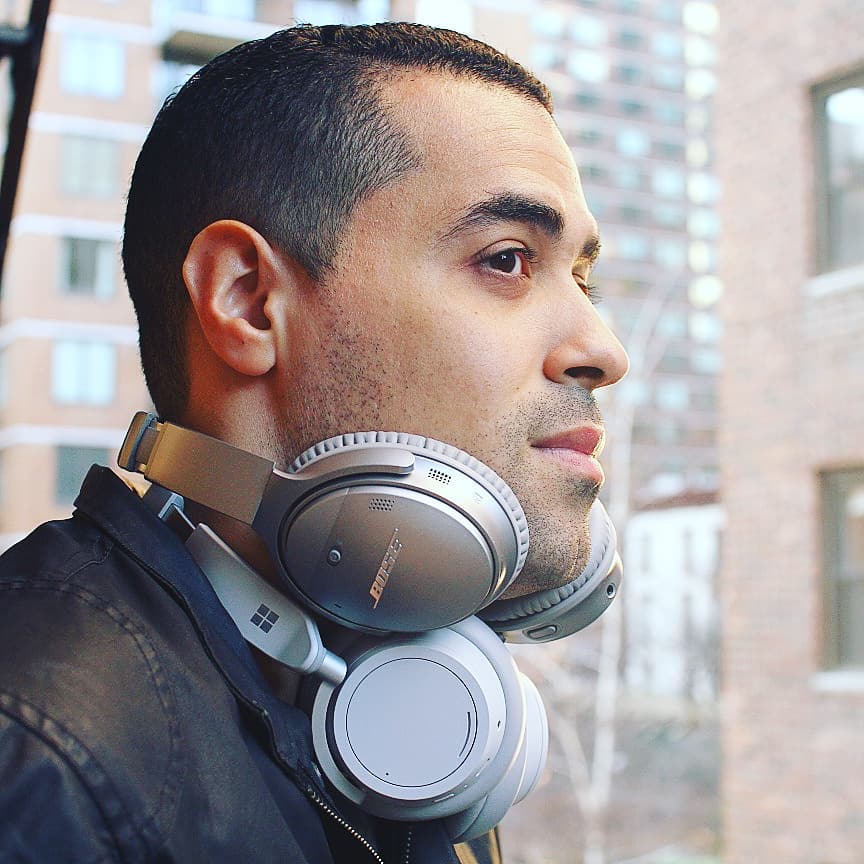Bose 700 vs. Microsoft Surface Headphones 2: Which noise-cancelling headphones win?
Let's see how the Bose 700 and Microsoft Surface Headphones 2 stack up
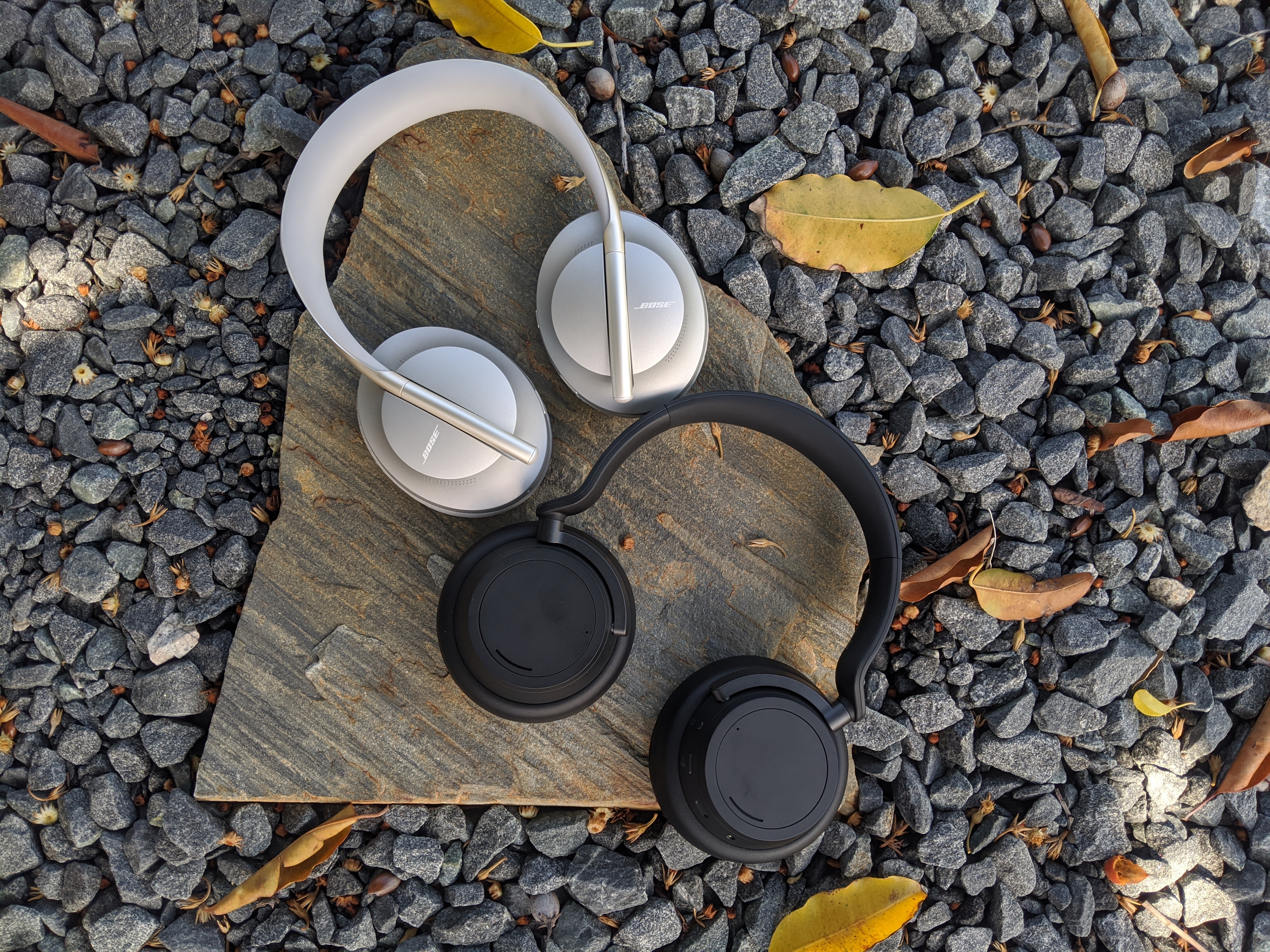
The Microsoft Surface Headphones 2 is a solid upgrade over its predecessor, but this newcomer faces some serious competition in the category-leading Bose 700. Two of the best noise-cancelling headphones money can buy, these models package great audio, noise cancellation, and smart features into striking over-the-ear designs.
Picking between the Bose 700 and Microsoft Surface Headphones 2 may ultimately come down to purpose. Business travelers and music lovers who desire distraction-free listening will lean towards the former, while productivity and work-from-home types may find the latter more compelling. Either way, you’re looking at two noise-cancellers that work superbly across all platforms, share similar battery life, and look as good as they sound.
- Check out our Bose 700 Headphones review
- ...and our Microsoft Surface Headphones 2 review
If you want excellent noise-cancelling headphones to enjoy music, movies, podcasts, and mobile games in peace, or need a pair of cans to hush rowdy crowds during commutes, you can’t go wrong with the Bose 700 or Microsoft Surface Headphones 2. However, there can only be one winner in this battle.
Bose 700 vs. Microsoft Surface Headphones 2: Specs compared
| Header Cell - Column 0 | Bose 700 | Mircrosoft Surface Headphones 2 |
|---|---|---|
| Price | $399.00; $449.95 (With charging case) | $249.99 |
| Size | 8 x 6.5 x 2 inches | 8 x 7.68 x 1.89 inches |
| Weight | 9 ounces | 10.22 ounces |
| Battery life (rated) | 20 hours (ANC on) | 20 hours (ANC on) |
| Companion app | Yes | Yes |
| Special features | Active noise cancellation, transparency mode, adjustable ANC, smart controls, tri-digital assistant support, multipoint technology, Bose AR-enabled | Active noise cancellation, transparency mode, adjustable ANC, customizable EQ, smart controls, digital assistant support, multipoint technology, Microsoft 365 integration |
Bose 700 vs. Microsoft Surface Headphones 2: Price and value
The Bose 700 has the higher MSRP at $399.95 and comes in four sharp colors: Black, Luxe Silver, Soapstone, and the exclusive Black/Copper version that is available on Apple.com for $450 with bundled charging case. Microsoft’s wireless cans cost less at $250 and come in either Light Gray or Matte Black.
Note: The Bose 700 is currently on sale for $379.95 on Amazon.com and Bose.com
For the absolute best noise-cancelling experience, Bose’s headphones are worth every penny. However, if you want something less expensive with more features, intuitive controls, and surprisingly good ANC, Microsoft’s wireless cans offer more bang for the buck.
Winner: Microsoft Surface Headphones 2
Bose 700 vs. Microsoft Surface Headphones 2: Design
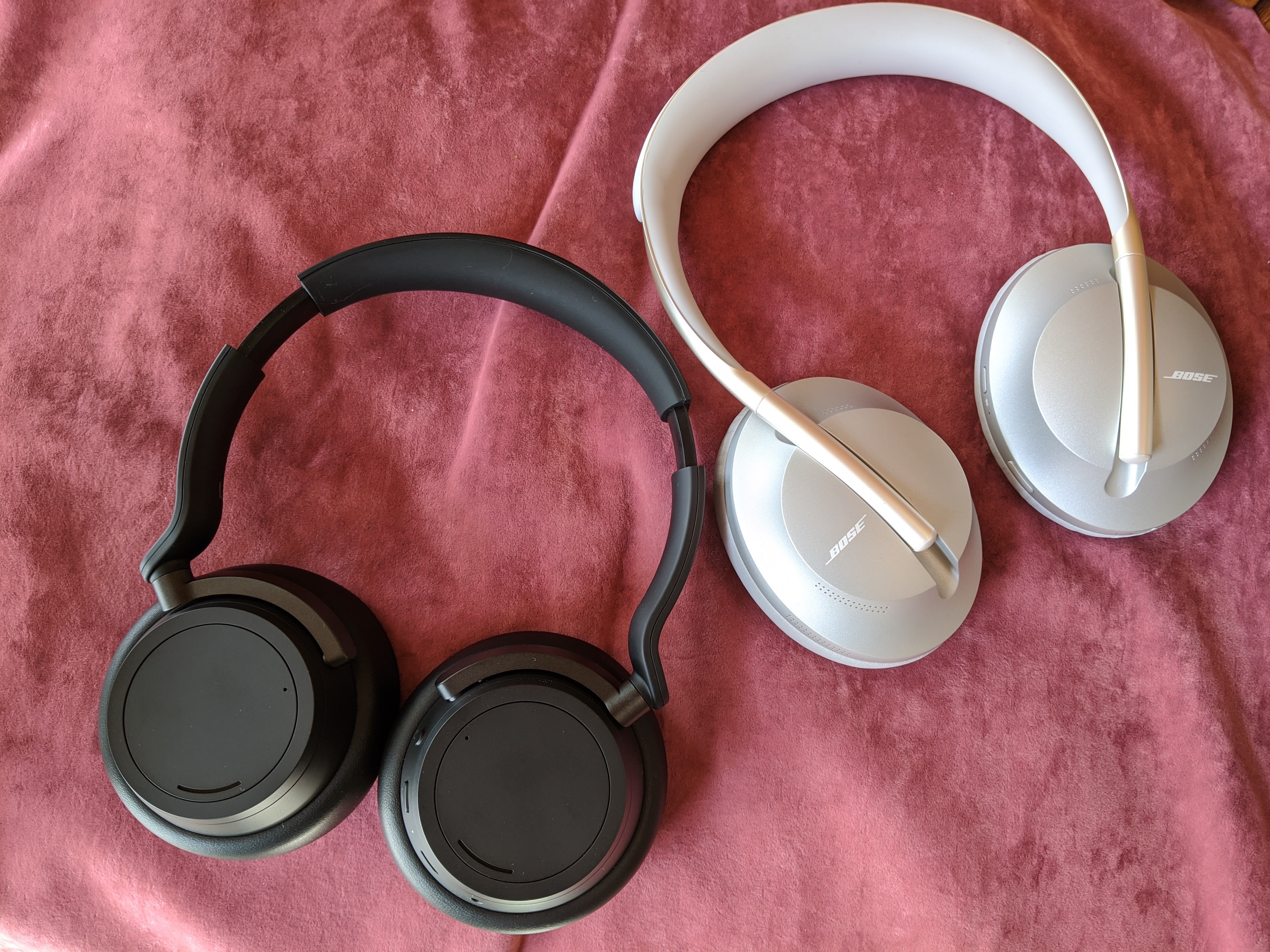
Bose and Microsoft know all about making attractive consumer products, and their latest creations are some of the most handsome-looking headphones out there.
Both models have flush designs that look like they were molded entirely from one piece of metal. Every component is uniformly connected, so you won’t even see minor details like screws or even the threading on the leather earpads. The minimalist, clean appearance combined with unique attributes such as the striking arcs below the earcups gives these models some ultramodern swagger.
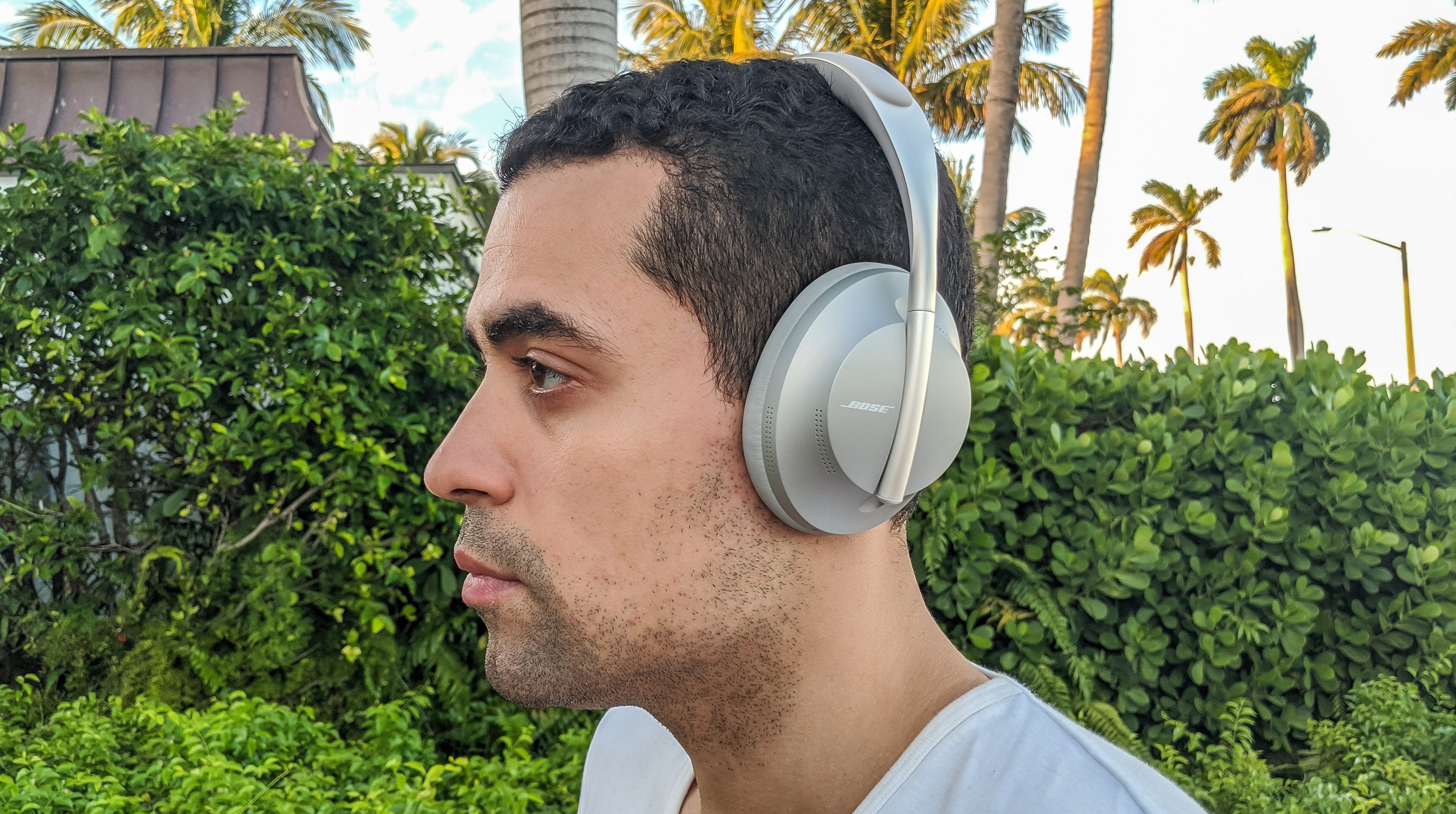
Build-wise, these are two sturdy pairs of headphones. I would give the edge to the Surface Headphones 2, which blends premium materials like plush padding, soft-touch plastic, and solid aluminum together to form a well-constructed frame. These are not headphones that will snap if you stretch out the headband or drop them to the ground. For the Bose 700, you’re looking at a mix of sturdy stainless steel and soft-touch plastic. The headphones can take a beating as well, though you will have concerns about the flimsy track system, which seems like it can break easily if dropped at the wrong angle. It’s an observation to keep in mind when unboxing these beauties.
Neither of these headphones collapse, which makes them less portable-friendly. But the accompanying travel cases does display and store them beautifully when packing them up for road trips.
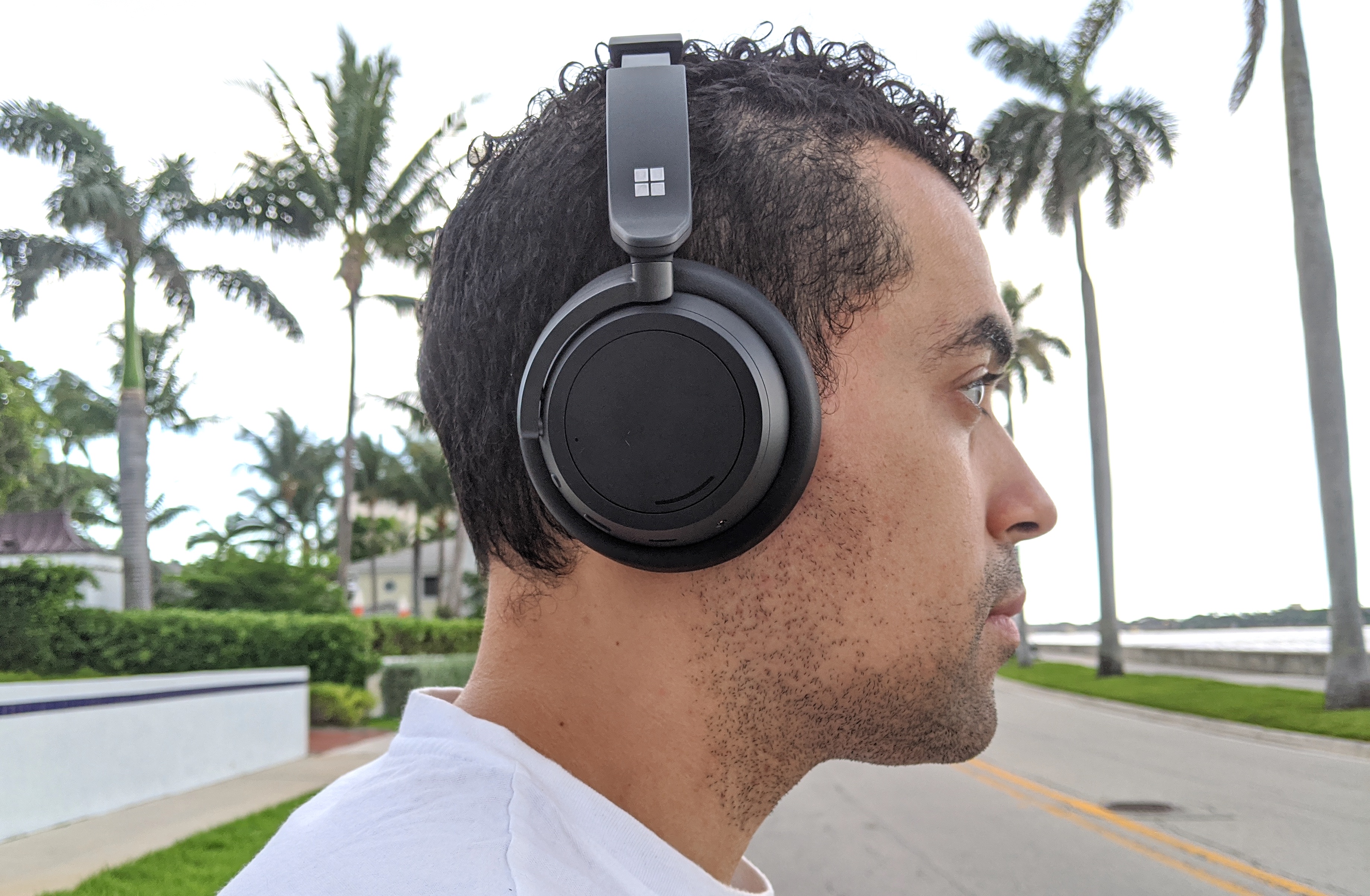
Bose has more colors to choose from, and bolder ones at that. The Black/Copper version is a head-turner, and although it comes with a higher price tag, its exclusivity is enough to earn you cool points with hypebeasts. At the same time, the Surface Headphones 2’s Matte Black colorway looks fantastic and will make you the envy of those who have either settled on the Light Gray version or any other lower-priced ANC headphones.
Despite the Surface Headphones 2 being slightly bulkier and heavier than the Bose 700, both pairs of headphones are equally comfortable. You’ll be able to sport them for about 2 hours daily before fatigue starts setting in. They also have plush earpads that rest gently on the ears. The headbands do feel a bit stiff, no matter which of the two headphones you wear, and can apply unwanted force on the skull, but this is only an issue when worn at the lowest setting. The key is to set the extenders two notches higher, which will provide the head more breathing room.
Neither headphone is perfectly constructed, but any design flaws these two models possess cancel each other out.
Winner: Draw
Bose 700 vs. Microsoft Surface Headphones 2: Controls
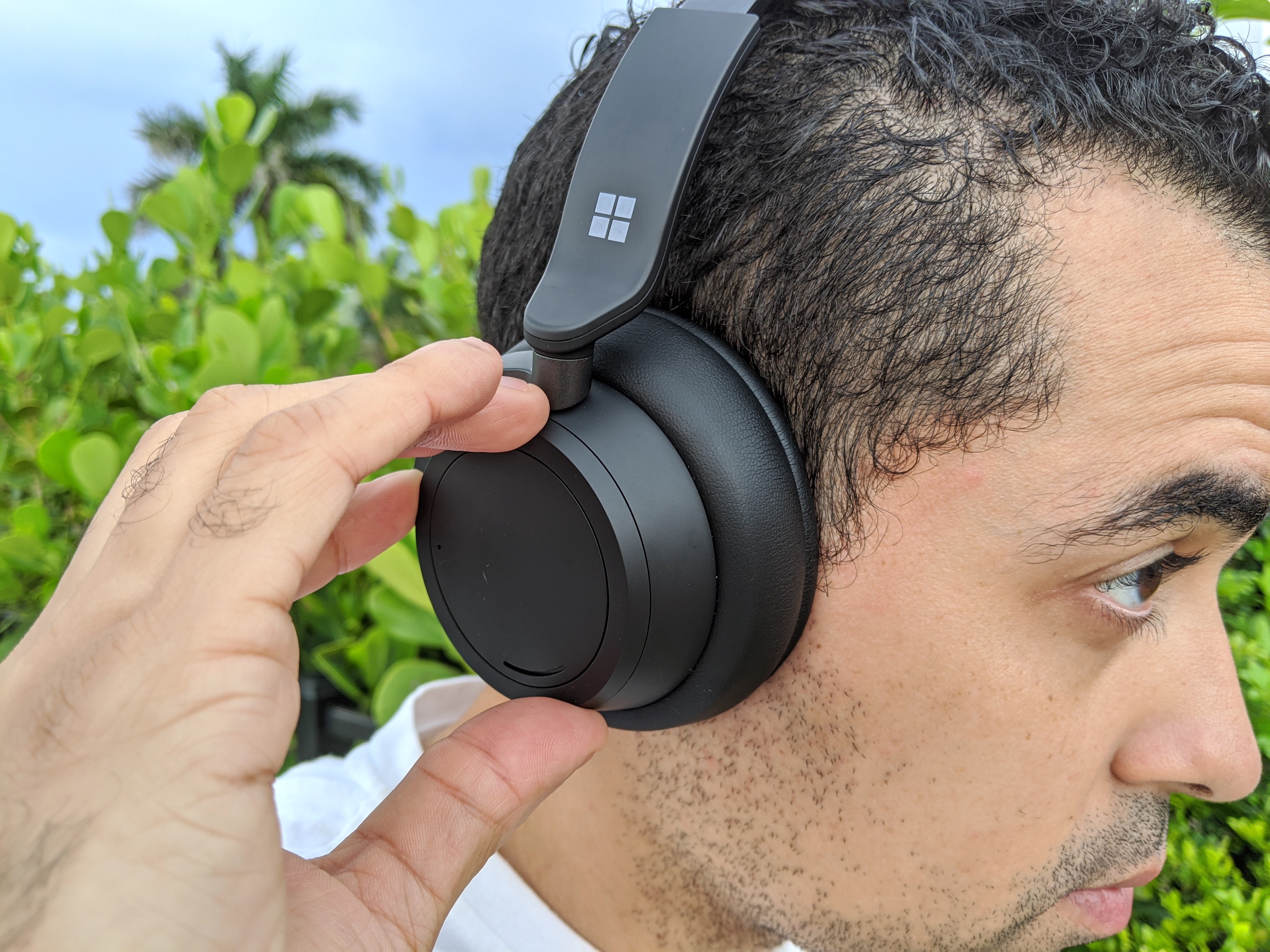
When it comes to functionality, Bose and Microsoft spared no expense. The two tech giants equipped their respective headphones with touch panels, motion detectors, digital assistant support, and other smart controls. However, Microsoft wins this round on ingenuity, creating the most user-friendly and fun control scheme we’ve tested via earcup dials, which make adjusting noise cancellation and volume a breeze. The Surface Headphones 2 is also programmed with multiple functions that are simple to execute and respond accurately to swipe and tap gestures.
The Bose 700 is intuitive too, boasting a responsive touch panel on the right ear cup that recognizes slide and tap gestures for playback and call management. My only complaint is that the panel is too small; the built-in extender often gets in the way when trying to forward or play back a record. You will find buttons on the earcups to power on/off or pair the headphones, cycle through the different listening modes (ANC or Ambient) and enable the digital assistant (Siri, Google Assistant or Alexa), which I feel works better on the 700, thanks to its impeccable speech recognition and swift voice command execution.
Winner: Microsoft Surface Headphones 2
Bose 700 vs. Microsoft Surface Headphones 2: Audio quality
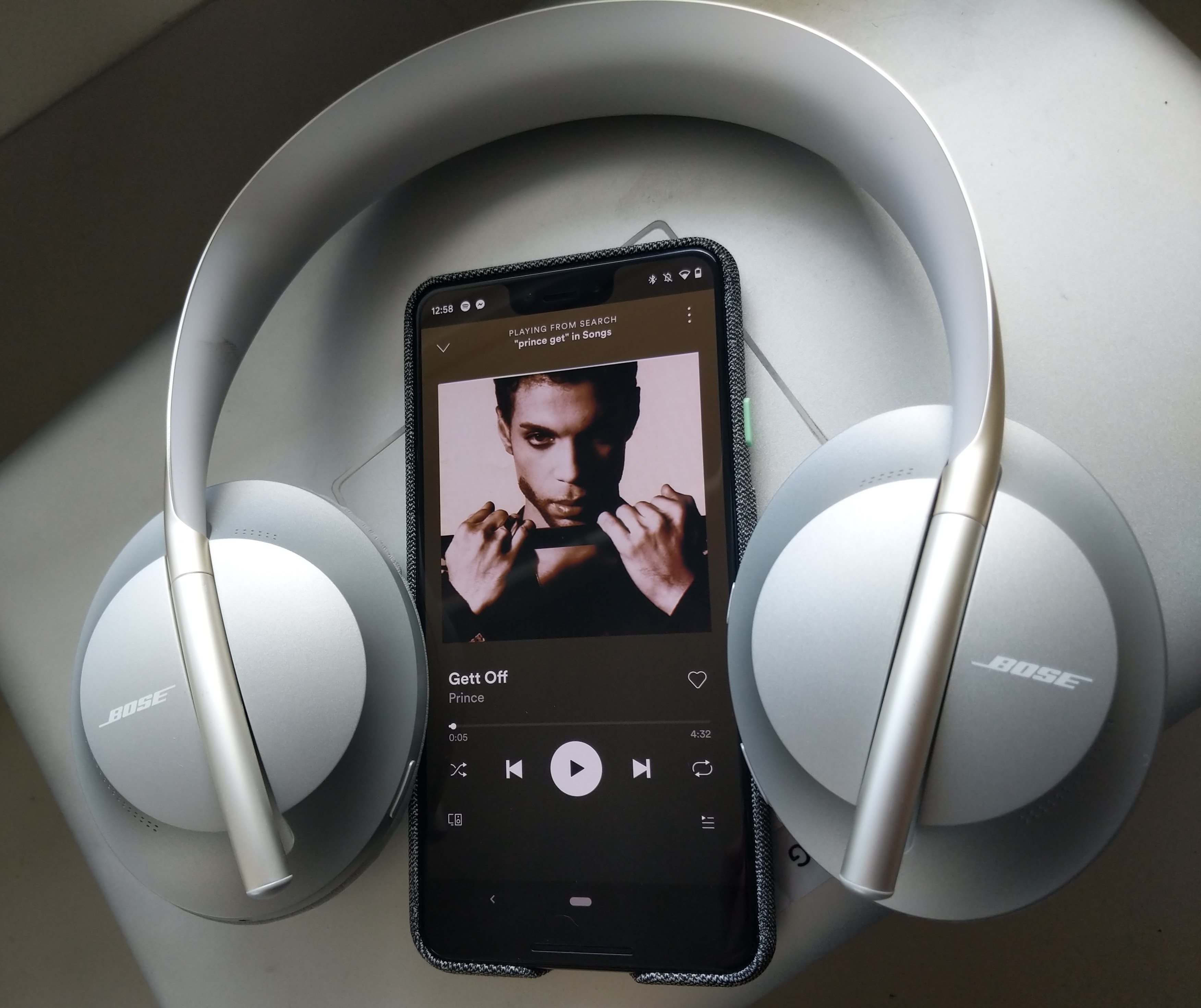
It’s tough to choose a winner here, especially since the two headphones bless your ears with lively, well-balanced sound. If I have to go with one, it’s the Bose 700 for its clean and precise presentation. But make no mistake, the Surface Headphones 2 isn’t far behind.
The screeching howls at the beginning of Prince’s “Get Off” showcased the Bose 700’s amazing high range, while the effervescent flute on the hook came through with warmth and clarity. I noticed a slight boost in bass as well when increasing the ANC levels, which accentuated kicks and snares. On more boom-heavy tracks, the Bose 700 produced punchy lows, though they felt more like jabs compared to the Surface Headphones 2’s deep bass response. On a record like Dr. Dre’s “The Next Episode,” the drums have very little presence. Still, despite the Bose 700’s tamed low end, these headphones have fantastic range that you can experience best when listening to orchestral records like Donald Byrd’s “You and the Music,” delivering fantastic reproduction as highlighted by the striking horn play and serene-sounding violins.
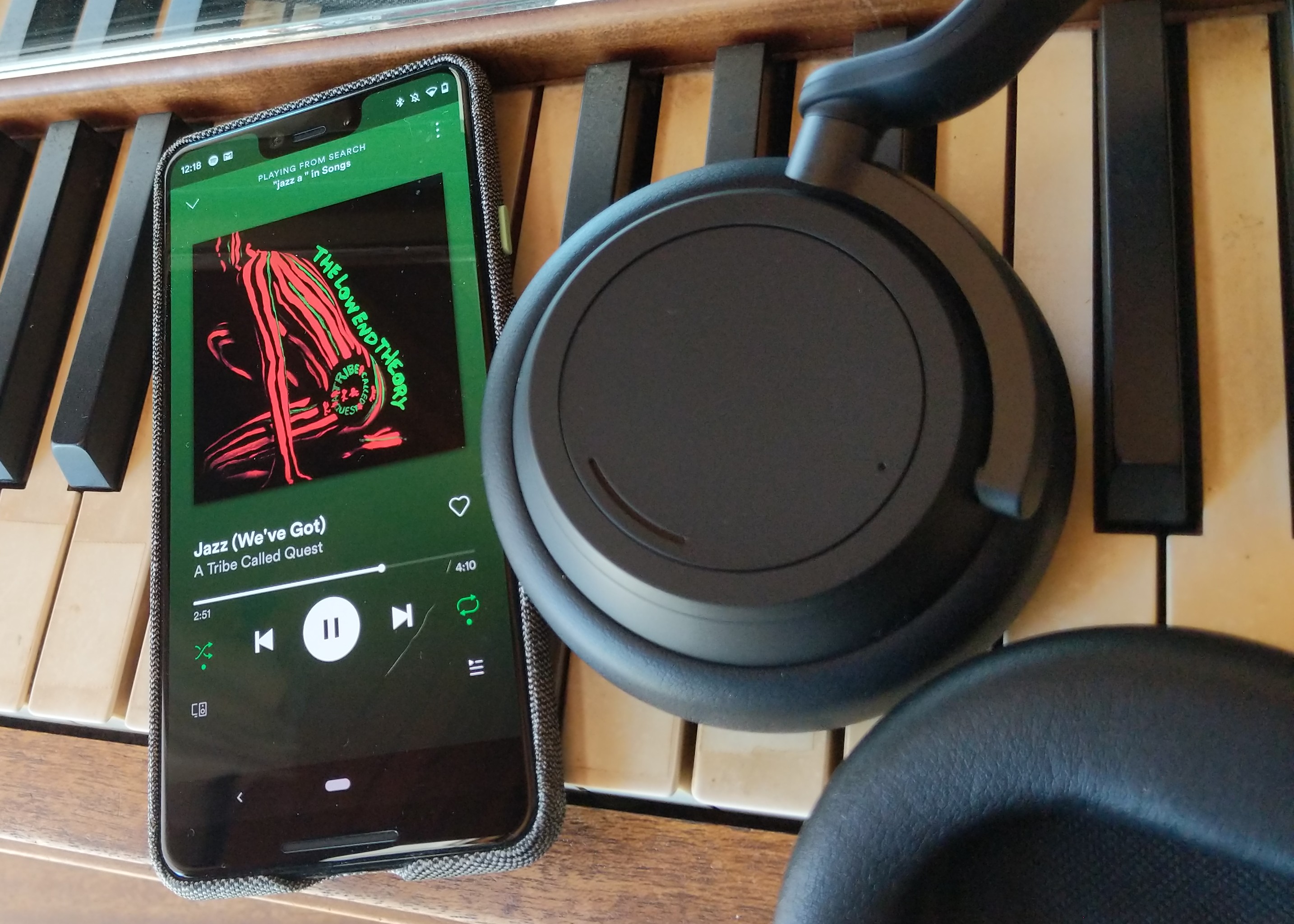
I’m a fan of the Surface Headphones 2’s boomy and spacious soundstage too. Hearing A Tribe Called Quest’s “Jazz (We’ve Got)” proved to me these headphones can handle multiple music genres and do it exceptionally well. From the thumping kick drum to the soothing saxophone sample near the conclusion, instruments are well represented and shine over the record’s groovy production. However, Microsoft failed to address the same issues it had with the original Surface Headphones, that being the aggressive bass, which often creates distortion and masks vocals on certain records. Synth-heavy tracks like Kanye West’s “Welcome to Heartbreak” don’t fare well, as Ye’s raps and Kid Cudi’s hook lack transparency.
Using either of these headphones in wired mode brings down the sound quality. You will notice dips in bass and volume. In addition, the Bose 700 and Surface Headphones 2 aux cables are very thin and fragile, so you’ll definitely want to be careful not to get them caught on anything that might easily rip them.
Winner: Bose 700
Bose 700 vs. Microsoft Surface Headphones 2: Active noise cancellation

Bose’s ANC technology has been the gold standard for years, as exemplified by the critically acclaimed QuietComfort 35 series (Check out our Bose QC 35 II review for more). The Bose 700 takes it up a notch with extra mics and smarter algorithms to offer champion noise neutralization.
Bose developed its powerful eight-mic system specifically for the 700, six of which are employed to block out high levels of external noise. The system works remarkably well, silencing various levels of sound from chatty neighbors to crying babies, portable drills to plane engines. It’s not powerful enough to cancel out a construction site or other ridiculously loud noises (e.g. ambulance sirens, jackhammer), but it does the best job of minimizing them. You can expect the best results at max ANC level (10), though you still get solid performance when lowering it to 8, which will also save you some battery life in the process.
Keep in mind that setting the Bose 700 to its lowest ANC level enables Ambient Mode, so you can hear what’s happening around you. It’s become a modern feature on most wireless headphones and one that works well on the Bose 700. I was able to engage in brief and clear-sounding convos with my fiancé and local baristas without having to remove the headphones.
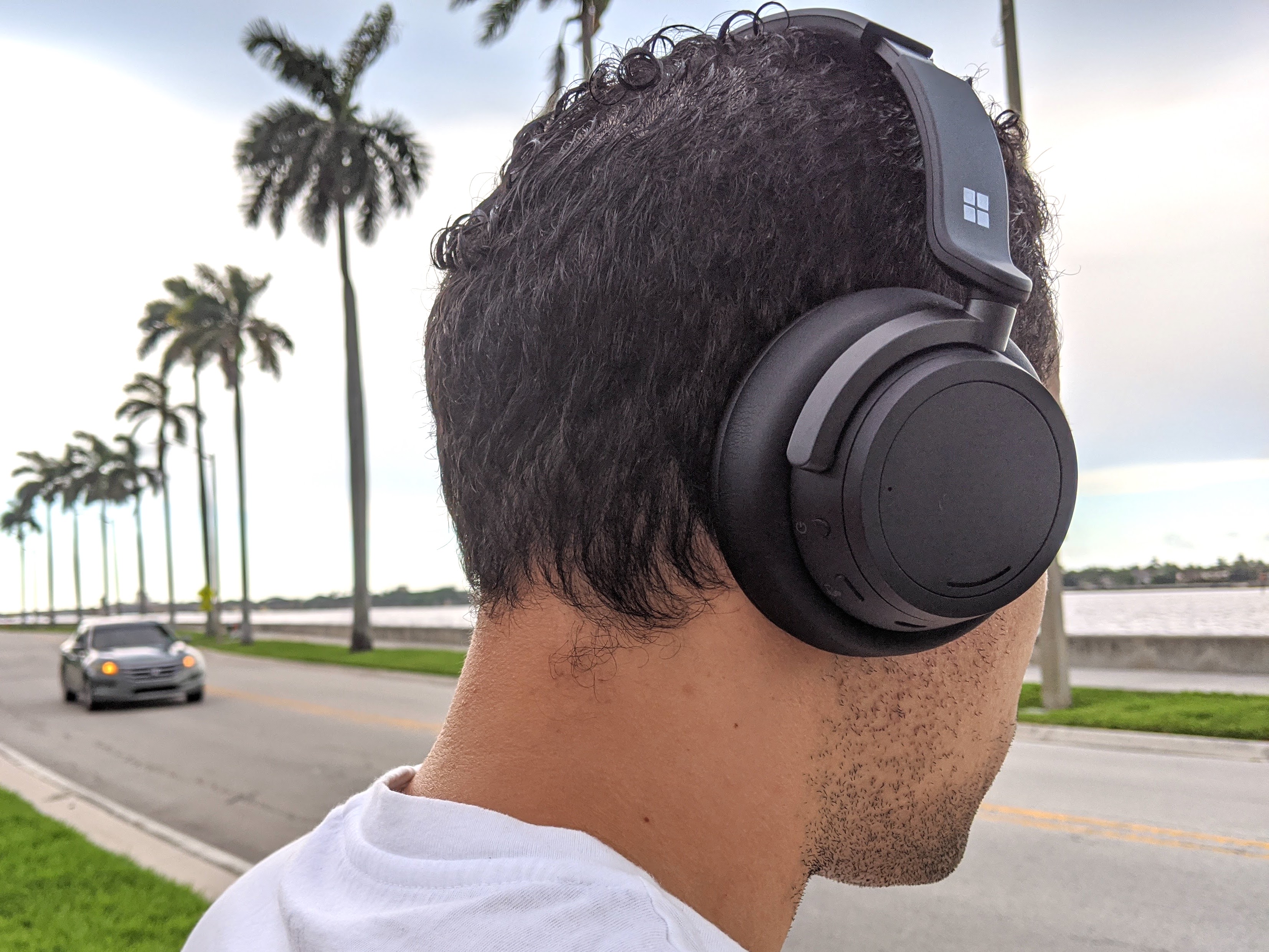
Microsoft deserves credit for being the first to introduce 13 levels of adjustable noise cancellation, something we got our first taste of when reviewing the original Surface Headphones and found very effective for quieting “angry commuters” and “rush-hour traffic.” Not much has changed, as Microsoft’s own eight-mic system is still capable of blocking high levels of background noise. I was able to hear music peacefully in the living room, while my fiancée jumped on conference calls in the same vicinity. The mics also did a great job of keeping my vocals clear during phone calls and limiting background interference.
All things considered, the Surface Headphones 2’s ANC can’t match what the Bose 700 delivers. When adjusting ANC levels to 10 or higher, I was surprised to still hear the phone calls and music coming out my fiancée’s iPhone speaker from several feet away. The Bose 700 didn’t give me that issue. Another criticism is that you can barely tell the difference between the Surface Headphones 2’s noise-cancelling levels; most high-frequency noises sounded the same on Level 5 and Level 10.
Winner: Bose 700
Bose 700 vs. Microsoft Surface Headphones 2: App and special features
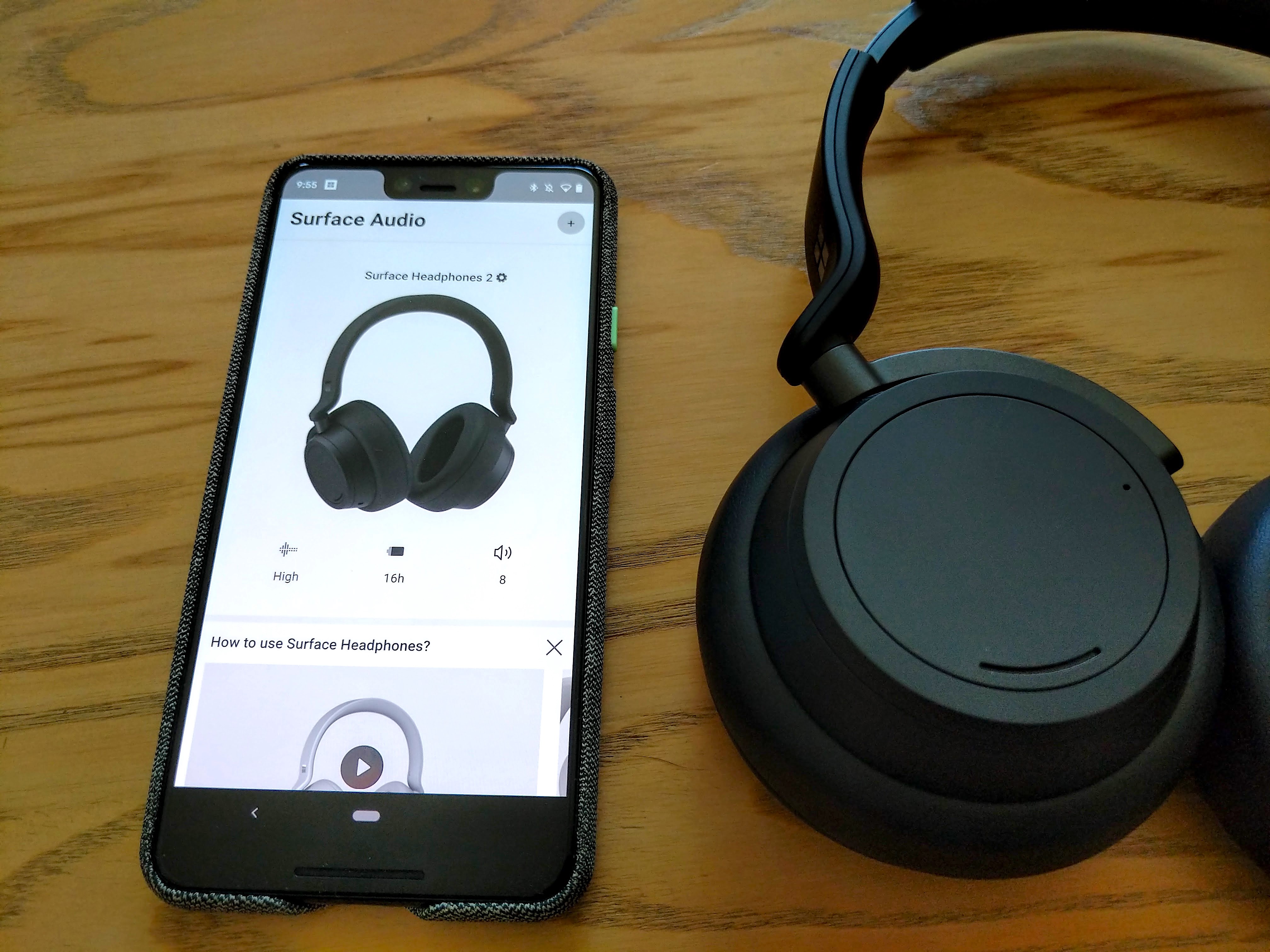
Give this round to Microsoft. Its Windows-friendly headphones have some cool tricks hidden underneath their sleek shell. Let’s start with multipoint technology, which is the most dynamic we’ve seen on pair of Bluetooth headphones, allowing users to pair up to 10 devices simultaneously. I’ve gone as far as connecting to 5 devices at once and found switching from one to another seamlessly. Connectivity is another strong point, as the headphones will instantly re-pair to any previously connected devices.
Moving onto the companion app, which has been rebranded to Surface Audio, the program opens up functionality to enhance the user experience across multiple categories. There is a built-in EQ that lets you adjust the frequency levels to your hearing, or you can pick from a handful of presets that are designed with specific genres in mind, though the majority don’t work well. You can set up your default digital assistant (Siri or Google Assistant), change language settings, and push firmware updates as well. Nonetheless, the headphones' unsung feature is voice dictation for Microsoft 365, which lets you verbally jot down notes in Windows programs (e.g. Word, Outlook, Powerpoint). It’s niche and something that very few people will utilize, but it works well and seems practical for when you want to give your fingers a break from typing.
My only gripe with Surface Audio is that Microsoft chose to remove serviceable features like Spotify integration. Android users must also continue to wait on the promised Play My Email feature, while iPhone users already have access to it.
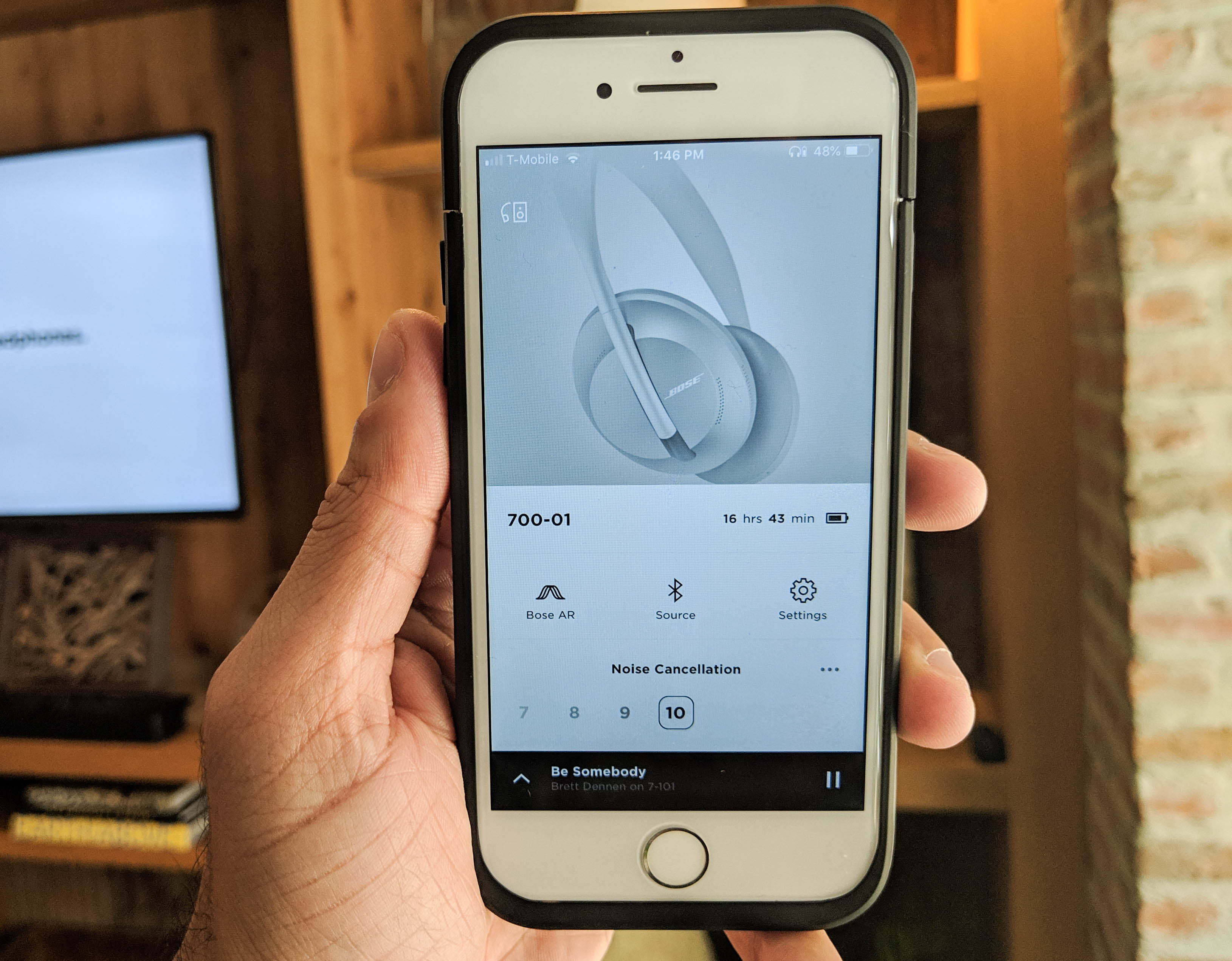
Bose launched an all-new mobile app, Bose Music, to go along with the Bose 700. It’s bare on features and still a little buggy. On the plus side, it’s easy to use, looks clean, and makes personalizing noise cancellation simple. The homescreen greets you with an ANC lever to set up and save three ANC settings that you can enable and cycle through when pressing the button on the left earcup. There is also a Self Voice mode that increases clarity on phone calls should you deem it necessary to improve call quality.
Besides that, there isn’t much else that Bose Music offers to make it worth downloading. No equalizer, music presets, or even a Find My Headphones feature. To add more insult to injury, the company announced it will officially kill off its AR audio platform, Bose AR, which the Bose 700 supports.
Winner: Microsoft Surface Headphones 2
Bose 700 vs. Microsoft Surface Headphones 2: Call quality
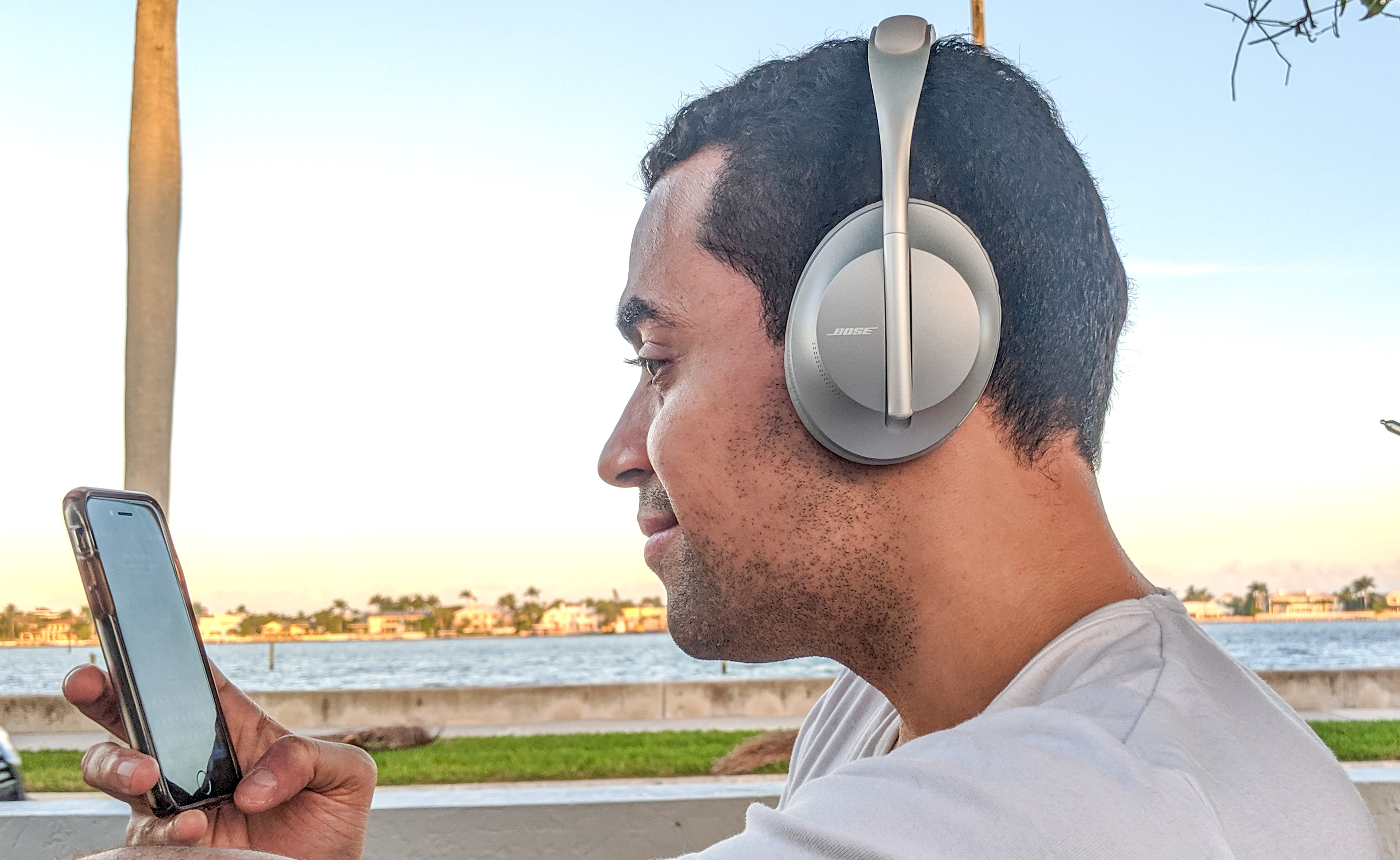
I’m happy to report that both models serve as great calling headsets, though I prefer the Bose 700 for talking outdoors. Four of the eight mics built into the Bose 700 help filter out background noise, which made all the difference when speaking with friends on Skype while sitting on the front porch; I was told my voice sounded loud and crisp. The Bose 700 also performed better against gusty winds, allowing me to communicate clearly when running back into the house during a surprise thunderstorm.
The Surface Headphones 2 works similarly, using its mics and proprietary algorithms to cancel out background sounds. I got some great call quality out of the headphones, especially on Skype calls, and there was even a point where my fiancée didn’t even notice a plane flying above me. You can also take calls in wired mode, though it’s the worst thing you can do since it produces a ticking static noise and cuts out voices on the other end sporadically.
Winner: Bose 700
Bose 700 vs. Microsoft Surface Headphones 2: Battery life
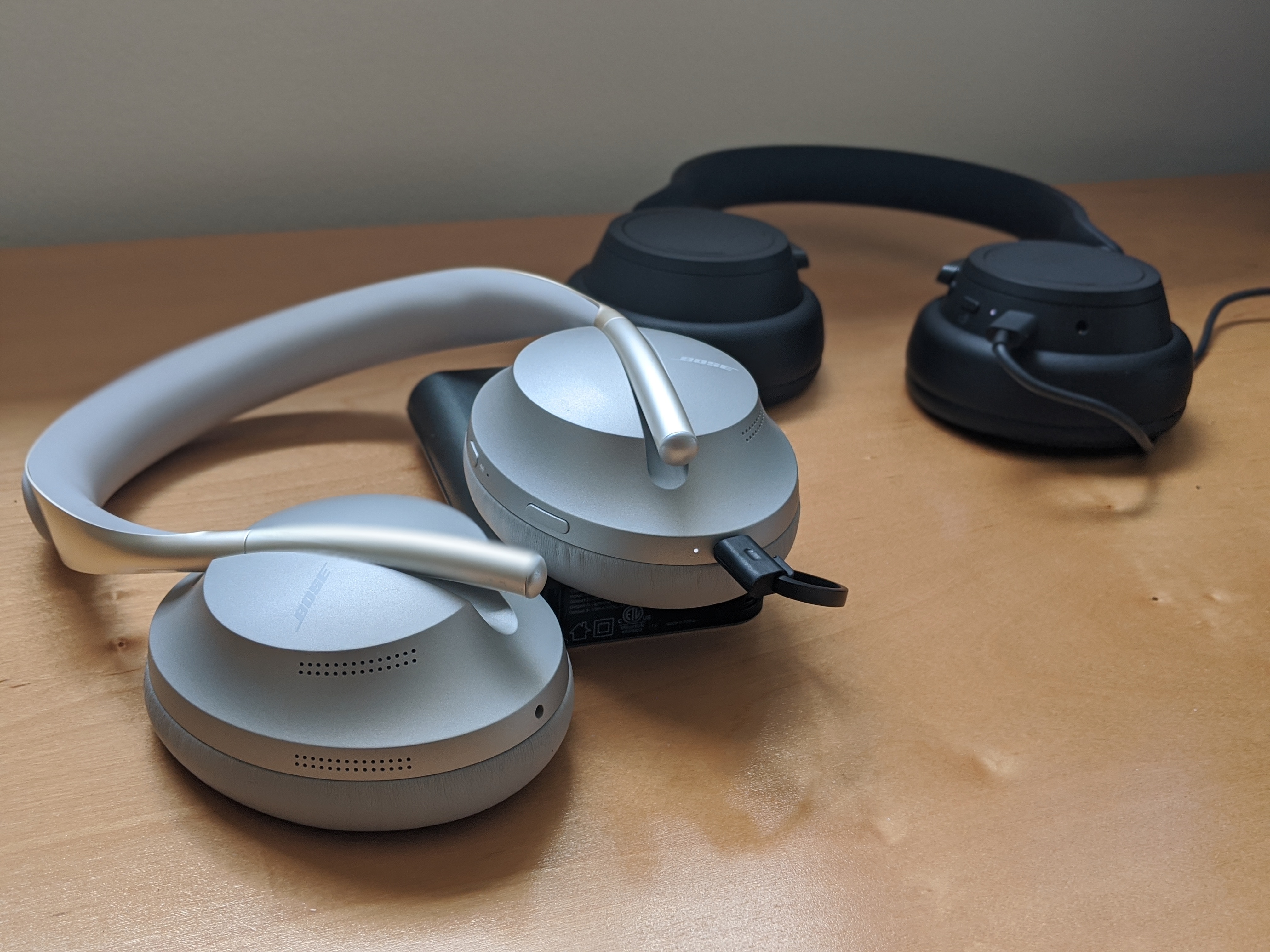
The sad truth is that neither headphone has what we consider lengthy playtimes. Bose and Microsoft rate the battery life on their devices at 20 hours with ANC on, which is much shorter when compared to other models like the Sony WH-1000xM3 (30 hours) and Jabra Elite 85h (40 hours). Not to mention only one of these lives up to their advertised playtime: the Bose 700.
I’ve gone almost a week without having to recharge Bose’s headphones, using them about 2 to 3 hours daily. Listening at high volume or at max ANC sucks up a lot of power, though it’s nowhere near as bad as the Surface Headphones 2. All of the advanced features and specs on Microsoft’s cans drain the battery really fast, bringing down the playtime to about 16 hours. This is enough to enjoy music and movies on coast-to-coast flights, but you’ll still need to keep the USB-C charging cable or a portable charger on hand to extend use.
Something else to consider is that Bose sells a charging case separately for $80, which gives users 40 additional hours. Do the math and it’s actually cheaper to purchase the headphones and case as a bundle ($450).
Winner: Bose 700
Bose 700 vs. Microsoft Surface Headphones 2: Verdict

Pitting any noise-canceller not created by Sony against a goliath like the Bose 700 almost seems unfair because Bose’s ANC technology is practically perfect. While the Microsoft Surface Headphones 2 puts up an admirable fight, Bose gets the win for its exceptional noise cancellation, sound quality, and design.
| Row 0 - Cell 0 | Bose 700 | Microsoft Surface Headphones 2 |
| Price and value (5) | 4 | 5 |
| Design (15) | 13 | 13 |
| Controls (10) | 8 | 9 |
| Audio quality (20) | 18 | 17 |
| Active noise cancelation (20) | 20 | 17 |
| Special features and apps (15) | 11 | 12 |
| Call quality (5) | 5 | 3 |
| Battery life (10) | 7 | 6 |
| Total Score (100) | 86 | 83 |
That’s not to say there isn’t much to be admired about Microsoft’s cans. Adjustable noise cancellation, which the Bose 700 has as well, is a cool feature that audiophiles will appreciate the more they fiddle with it. Sound is impressively good too. But the Surface Headphones 2's biggest selling points are its impeccable wireless performance (being able to connect to 10 devices simultaneously is dope) and productivity features (e.g. Microsoft 365, Play My Email).
In the end, the Bose 700 has the circuitry and specs to grant a better listening and noise-cancelling experience.
Sign up to get the BEST of Tom's Guide direct to your inbox.
Get instant access to breaking news, the hottest reviews, great deals and helpful tips.
A lifestyle journalist with an affinity for consumer products, Alex has over a decade of experience and has worked with popular publications such as Complex, Thrillist, Men’s Health, Gear Patrol, AskMen, and Hoop Magazine. He currently focuses on audio, reviewing the most coveted headphones in the market for both Tom’s Guide and Laptop Magazine.
